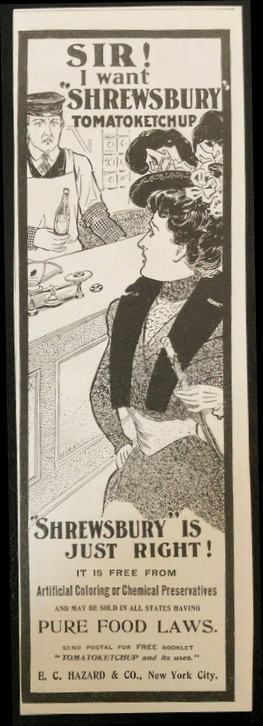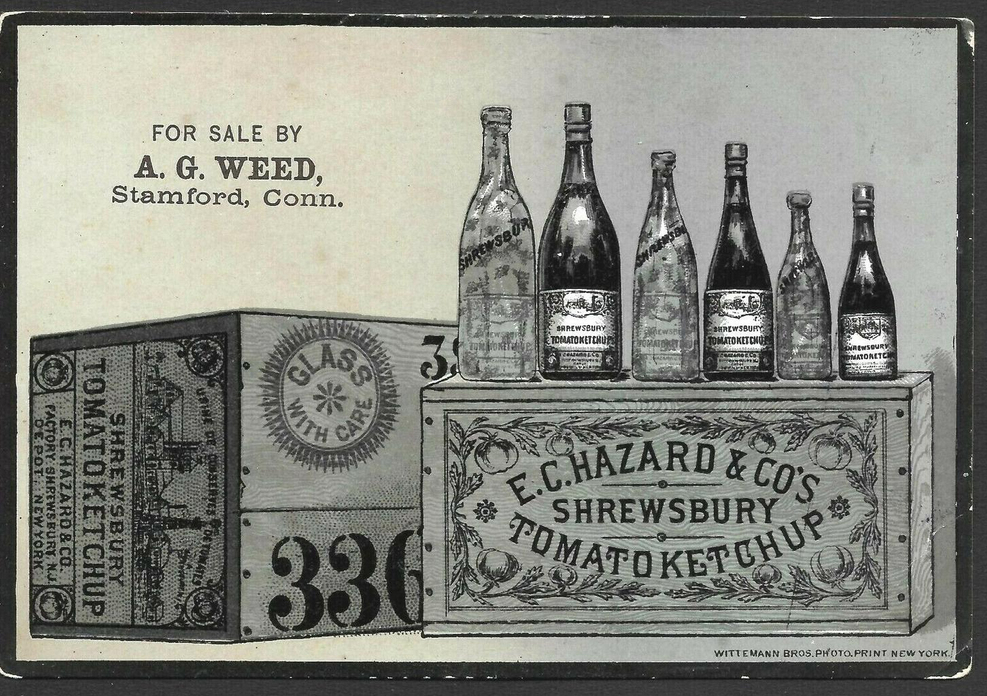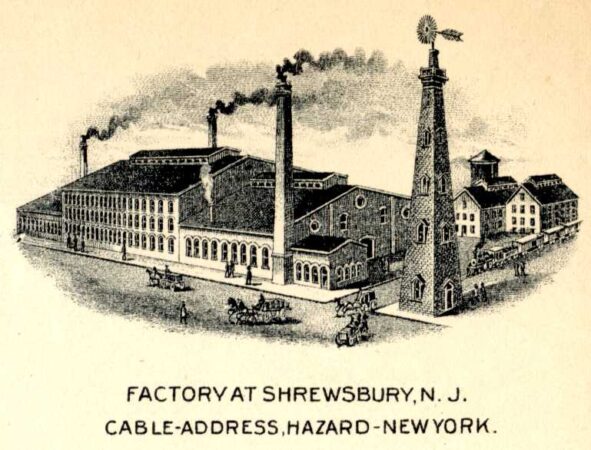On November 7, 1888, the E.C. Hazard canning factory in Shrewsbury caught fire and was totally destroyed. The Red Bank Daily Register described the complex as “the most complete affair of its kind in the country,” and estimated the loss at $50,000, which would be about $1.6 million today.
According to Lost Monmouth County, by longtime regional historian Randall Gabrielan, E.C. Hazard was a man who made his first fortune in the grocery wholesale/import business in New York City. This led to his involvement with New Jersey tomato processors, and eventually Hazard became a new entrant himself, opening a plant in Burlington County, and then acquiring 36 acres on the north side of Sycamore Avenue from Gordon and Jacob Sickles on March 30, 1883.
Ketchup as we know it today tastes pretty much the same regardless of manufacturer, but this was not the case in the late 19th century. Originating as a fish sauce in China, products sold as ketchup had a wide variety of tastes, colors, and textures — and were very inconsistent in quality.

Hazard’s new factory produced a consistently high-quality ketchup owing in part to Hazard’s investment in his factory. The machinery was said to be new and the best that could be purchased, much of it made to order.

According to news reports, the fire at the factory started in a room used for drying bottles and glassware after cleaning. A fire was maintained in the room and the temperature kept high to accelerate the drying process. The fire spread quickly, and “inside of two hours all the factory buildings except two of the packing houses were destroyed.”

Hazard rebuilt his factory on the same spot and was back in business in a remarkably short time. According to Gabrielan, he continued as a leading manufacturer of ketchup and other products until his death on February 5, 1905, which led to the decline of his businesses. After two years, Hazard’s heirs declared the business bankrupt, but kept it running through 1914, when once again most of the factory was destroyed by fire. It reopened in 1919, but by then the company was no longer a viable competitor.
Sources:
A Factory Destroyed. (1888). The Daily Register, Red Bank, N.J., November 7, 1888, P. 1.
Canning Factory Burns. (1914). The New York Times, New York, N.Y., February 14, 1914, P.
18.
Gabrielan, Randall. (2021). Lost Monmouth County. The History Press, Charleston, S.C.
Kurlansky, Mark. (2003). Salt: A World History. Penguin Books, New York, N.Y.
Webster, Ian. (2023). CPI Inflation Calculator. Available: https://www.in2013dollars.com/


Leave a Reply